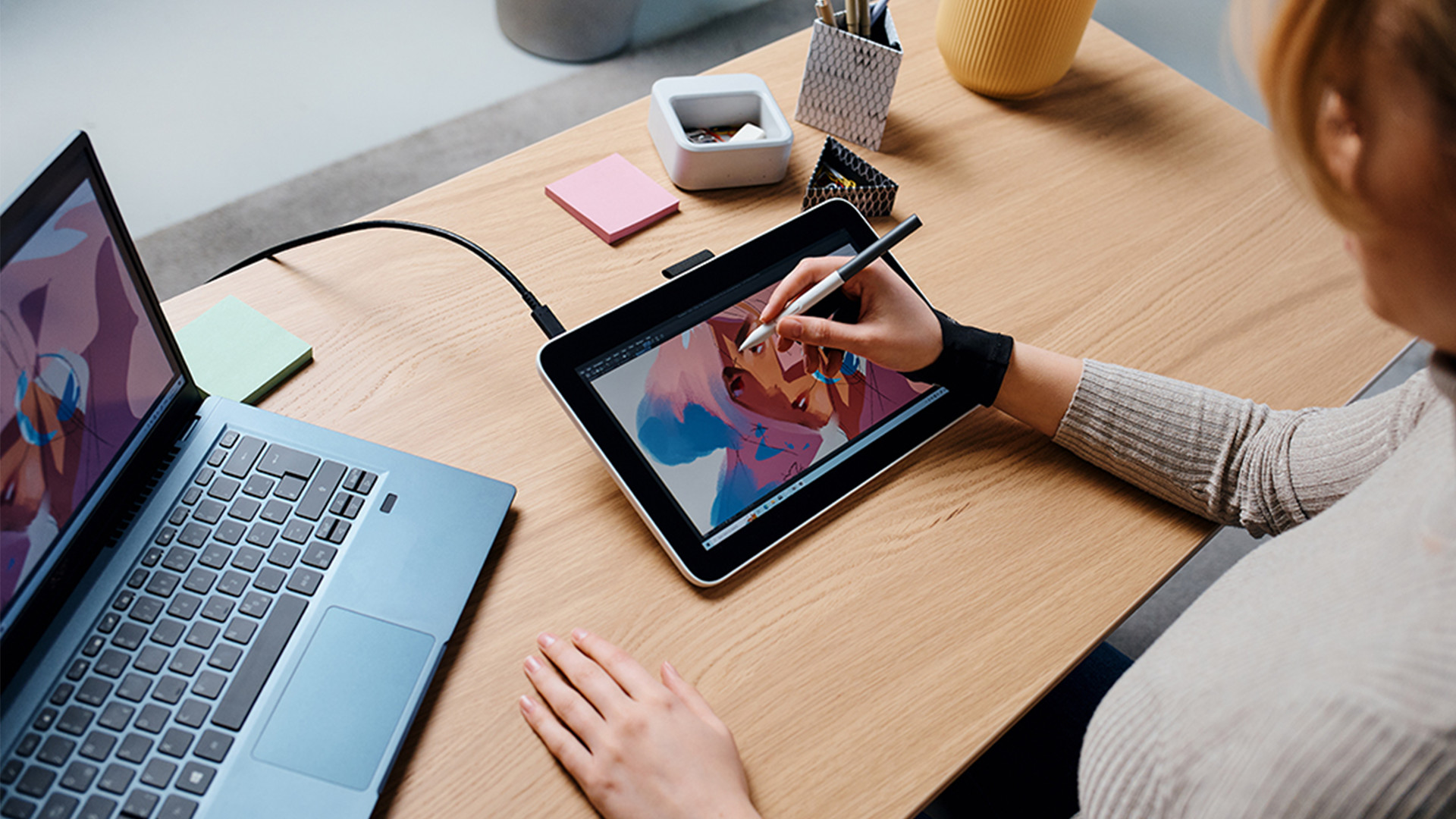Can’t pick a graphics tablet? This pro artist says it’s a question of 'how you want to live'
Narwhal Studios' CEO on Hollywood's Unreal Engine transformation

Digital art is a constantly evolving space, with both hardware and software continually improving to allow for greater efficiency and a true-to-life artistic experience – but you might not realize how big a part the best drawing tablets and the best drawing software play in the modern filmmaking process.
In an interview with Felix Jorge, CEO and co-founder of Narwhal Studios, we discussed everything from how his studio is using Unreal Engine and VR in virtual production for TV and film to what software and hardware sees the most use in his line of work, as well as getting some tips for budding digital artists.
Narwhal Studios has worked on productions including Ahsoka, The Mandalorian, Black Adam, and Ant-Man and the Wasp: Quantumania, developing a host of virtual production tools in everything from visualization processes to in-camera effects using Unreal Engine.
But how does this process leverage digital art tools? Jorge says they’re quintessential at almost every stage: “It's cool because it’s a marriage of film and game artists, and both of them use drawing tablets and traditional digital art hardware. I have my Wacom tablet right here at all times – most of our artists do.”

Lights, camera, drawing tablet
Jorge explains that right from the initial stages of film production, drawing tablets have their role as artists begin breaking down the script and producing concept art. As the team works in Unreal Engine to produce sets and images, these are sent to drawing tablets where artists address notes, add details, and start to develop on the concepts.
“A lot of what we do with the design process passes through our tablets,” he explains, “whether it being [Unreal Engine assets] sourced online, or starting from scratch. At times we have artists that are working digitally, and other times we have artists that are sculpting things physically, and using photogrammetry we throw it back into Unreal Engine. But it always hits our machines and it always hits the tablet.”
In that way, he says, it’s funny to even talk about drawing tablets as a distinct device. “It’s so integrated that I don't consider it part of the setup. There isn’t a piece of hardware that comes with us everywhere other than [our drawing tablets], not even the VR headsets.”
Sign up for breaking news, reviews, opinion, top tech deals, and more.
Putting pen to paper
So, what’s the damage if you’re wanting to invest in a digital art setup? Jorge says in many ways, it’s easier now than ever: “Thankfully, hardware and software has gotten a lot cheaper. There are free versions of a lot of the paint programs, Unreal Engine is free, and I'm sure there are some programs where you can paint on models for free.”
“For the hardware itself, you just need a decent video card, and the video card is going to tell you what kind of motherboard you need. When it comes to tablets that connect to your PC, I don't even see anyone out there that's even remotely close to Wacom.”
Wacom has dominated the drawing tablet market for years, and especially in professional or academic environments. For Jorge’s work, Wacom’s supreme color accuracy, especially in its newest models, seals the deal, he explains.
With so many drawing tablets using similar technology, features, and specs, Jorge recommends choosing any device based on “how you want to live,” explaining: “For example, my business partner is an art director. So he has a big Wacom Cintiq that he can maneuver; he wants to see big imagery and paint on something that is going to help him feel comfortable. On the other hand, I'm a manager. I mostly use it to give notes to circle things and to drive workshops sometimes, so I have a smaller one.”
“When it comes to handhelds I use my iPad, and I've bought many different versions. I also have a Samsung tablet, and I've had a Google, but I like the Apple iPad Pro the most when it comes to drawing in a mobile way.”

Getting started
If you’re looking to get a start in digital art, Jorge says the best place to start isn’t necessarily college; instead, he recommends taking matters into your own hands and getting stuck right in with software and hardware.
For virtual production and animation specifically, he says to “start by drawing, then Unreal Engine is a great resource to start engaging with the 3D realm that allows you to get familiar with it.”
From there, he says any combination of academia and at-home learning through platforms like YouTube will see you through. “I learned almost everything on YouTube. Just through immersing yourself enough where you can develop the language, and then once you know how to talk about it, you can search it.”
More than anything, Jorge says, it’s a great time to be a nerd right now. “Everyone has access [to learning materials], and so if you're afraid of engaging with it, the easiest thing is to look it up and go on YouTube, and do a little research. And I find that people will be more open to trying it out once they do that.”
With so much of the best free drawing software on offer, and some of the best drawing tablets being very affordable, digital art has never been such an affordable or accessible interest. Plus, with new and sophisticated tools like Procreate Dreams bringing user-friendly animation directly to iPads, we could be about to witness a huge digital art renaissance – so now is a perhaps a better time than ever to get ahead of the curve.
You might also like...

Josephine Watson is TechRadar's Managing Editor - Lifestyle. Josephine is an award-winning journalist (PPA 30 under 30 2024), having previously written on a variety of topics, from pop culture to gaming and even the energy industry, joining TechRadar to support general site management. She is a smart home nerd, champion of TechRadar's sustainability efforts as well and an advocate for internet safety and education. She has used her position to fight for progressive approaches towards diversity and inclusion, mental health, and neurodiversity in corporate settings. Generally, you'll find her fiddling with her smart home setup, watching Disney movies, playing on her Switch, or rewatching the extended edition of Lord of the Rings... again.